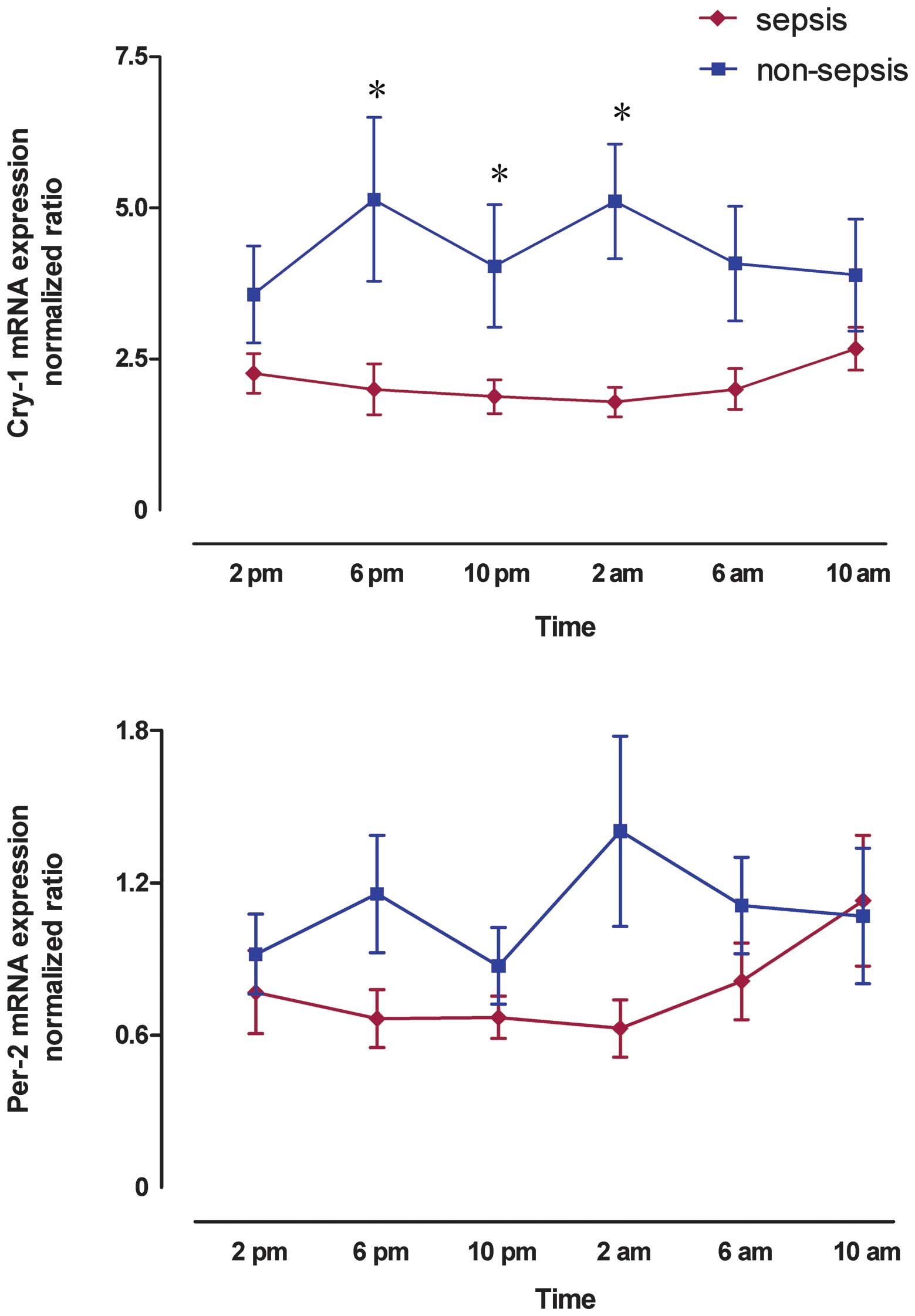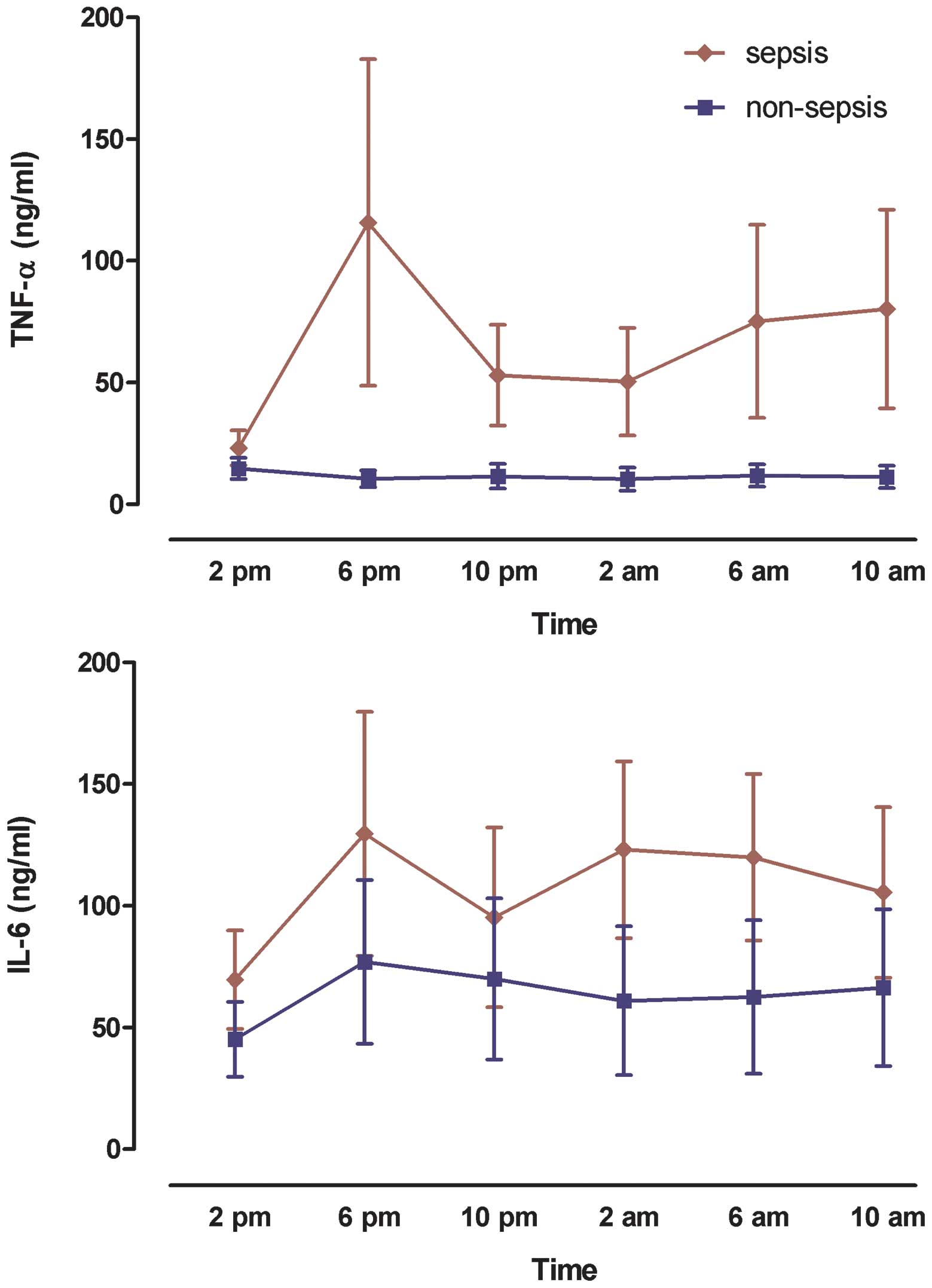|
1
|
Mackenzie I and Lever A: Management of
sepsis. Br Med J. 335:929–932. 2007. View Article : Google Scholar
|
|
2
|
Dellinger RP, Levy MM, Carlet JM, Bion J
and Parker MM: Surviving Sepsis Campaign: international guidelines
for management of severe sepsis and septic shock. Crit Care Med.
36:296–327. 2008. View Article : Google Scholar
|
|
3
|
Riedemann NC, Guo RF and Ward PA: The
enigma of sepsis. J Clin Invest. 112:460–467. 2003. View Article : Google Scholar : PubMed/NCBI
|
|
4
|
Chima RS, Hake PW, Piraino G, Mangeshkar P
and Denenberg A: Ciglitazone ameliorates lung inflammation by
modulating the inhibitor κB protein kinase/nuclear factor-κB
pathway after hemorrhagic shock. Crit Care Med. 36:2849–2857.
2008.PubMed/NCBI
|
|
5
|
Lubbers T, De Haan JJ, Hadfoune M, Zhang Y
and Luyer MD: Lipid-enriched enteral nutrition controls the
inflammatory response in murine Gram-negative sepsis. Crit Care
Med. 38:1996–2002. 2010.PubMed/NCBI
|
|
6
|
Dorresteijn MJ, Visser T, Cox LA, Bouw MP
and Pillay J: C1-esterase inhibitor attenuates the inflammatory
response during human endotoxemia. Crit Care Med. 38:2139–2145.
2010. View Article : Google Scholar : PubMed/NCBI
|
|
7
|
Pevet P and Challet E: Melatonin: both
master clock output and internal time-giver in the circadian clocks
network. J Physiol Paris. 105:170–182. 2011. View Article : Google Scholar : PubMed/NCBI
|
|
8
|
Brzezinski A: Melatonin in humans. N Engl
J Med. 336:186–195. 1997. View Article : Google Scholar
|
|
9
|
Escames G, Leon J, Macias M, Khaldy H and
Acuna-Castroviejo D: Melatonin counteracts
lipopolysaccharide-induced expression and activity of mitochondrial
nitric oxide synthase in rats. FASEB J. 17:932–934. 2003.
|
|
10
|
Lee YD, Kim JY, Lee KH, Kwak YJ and Lee
SK: Melatonin attenuates lipopolysaccharide-induced acute lung
inflammation in sleep-deprived mice. J Pineal Res. 46:53–57. 2009.
View Article : Google Scholar : PubMed/NCBI
|
|
11
|
Mundigler G, Delle-Karth G, koreny M, et
al: Impaired circadian rhythm of melatonin secretion in sedated
critically ill patients with severe sepsis. Crit Care Med.
30:536–540. 2002. View Article : Google Scholar : PubMed/NCBI
|
|
12
|
Bourne RS and Mills GH: Melatonin:
possible implications for the postoperative and critically ill
patient. Intensive Care Med. 32:371–379. 2006. View Article : Google Scholar : PubMed/NCBI
|
|
13
|
Reppert SM and Weaver DR: Coordination of
circadian timing in mammals. Nature. 418:935–941. 2002. View Article : Google Scholar : PubMed/NCBI
|
|
14
|
James FO, Cermakian N and Boivin DB:
Circadian rhythms of melatonin, cortisol, and clock gene expression
during simulated night shift work. Sleep. 30:1427–1436.
2007.PubMed/NCBI
|
|
15
|
O’Connor MF, Motivala SJ, Valladares EM,
Olmstead R and Irwin MR: Sex differences in monocyte expression of
IL-6: role of autonomic mechanisms. Am J Physiol Regul Integr Comp
Physiol. 293:R145–R151. 2007.PubMed/NCBI
|
|
16
|
Haimovich B, Calvano J, Haimovich AD,
Calvano SE and Coyle SM: In vivo endotoxin synchronizes and
suppresses clock gene expression in human peripheral blood
leukocytes. Crit Care Med. 38:751–758. 2010. View Article : Google Scholar : PubMed/NCBI
|
|
17
|
Pollard LC, Choy EH, Gonzalez J, Khoshaba
B and Scott DL: Fatigue in rheumatoid arthritis reflects pain, not
disease activity. Rheumatology (Oxford). 45:885–889. 2006.
View Article : Google Scholar : PubMed/NCBI
|
|
18
|
American College of Chest
Physicians/Society of Critical Care Medicine consensus conference.
Definitions of sepsis and organ failure and guidelines for the use
of innovative therapies in sepsis. Crit Care Med. 20:864–874. 1992.
View Article : Google Scholar
|
|
19
|
Kusanagi H, Hida A and Satoh K: Expression
profiles of 10 circadianclock genes in human peripheral blood
mononuclear cells. Neurosci Res. 61:136–142. 2008. View Article : Google Scholar : PubMed/NCBI
|
|
20
|
Verceles AC, Silhan L and Terrin M:
Circadian rhythm disruption in severe sepsis: the effect of ambient
light on urinary 6-sulfatoxymelatonin secretion. Intensive Care
Med. 38:804–810. 2012. View Article : Google Scholar : PubMed/NCBI
|
|
21
|
Liu J, Malkani G and Shi X: The circadian
clock Period 2 gene regulates gamma interferon production of NK
cells in host response to lipopolysaccharide-induced endotoxic
shock. Infect Immun. 74:4750–4756. 2006. View Article : Google Scholar : PubMed/NCBI
|
|
22
|
Okada K, Yano M, Doki Y, Azama T and
Iwanaga H: Injection of LPS causes transient suppression of
biological clock genes in rats. J Surg Res. 145:5–12. 2008.
View Article : Google Scholar : PubMed/NCBI
|
|
23
|
Teboul M, Barrat-Petit MA and Li XM:
Atypical patterns of circadian clock gene expression in human
peripheral blood mononuclear cells. J Mol Med. 83:693–699. 2005.
View Article : Google Scholar : PubMed/NCBI
|
|
24
|
Godin PJ and Buchman TG: Uncoupling of
biological oscillators: A complementary hypothesis concerning the
pathogenesis of multiple organ dysfunction syndrome. Crit Care Med.
24:1107–1111. 1996. View Article : Google Scholar
|
|
25
|
Steinhilber D, Brungs M, Werz O,
Wiesenberg I and Danielsson C: The nuclear receptor for melatonin
repress 5-lipoxygenase gene expression in human B lymphocytes. J
Biol Chem. 270:7037–7040. 1995. View Article : Google Scholar : PubMed/NCBI
|
|
26
|
Deng WG, Tang ST, Tseng HP and Wu KK:
Melatonin suppresses cyclooxygenase-2 and inducible nitric oxide
synthase expression by inhibiting p52 acetylation and binding.
Blood. 108:518–524. 2006. View Article : Google Scholar : PubMed/NCBI
|
|
27
|
Carrillo-Vico A, Lardone PJ, Naji L,
Fernandez-Santos JM and Martin-Lacave I: Beneficial pleiotropic
actions of melatonin in an experimental model of septic shock in
mice: regulation of pro-/anti-inflammatory cytokine network,
protection against oxidative damage and anti-apoptotic effects. J
Pineal Res. 39:400–408. 2005. View Article : Google Scholar
|
|
28
|
Shang Y, Xu SP, Wu Y, Jinag YX and Wu ZY:
Melatonin reduces acute lung injury in endotoxemic rats. Chin Med
J(Engl). 122:1388–1393. 2009.PubMed/NCBI
|













